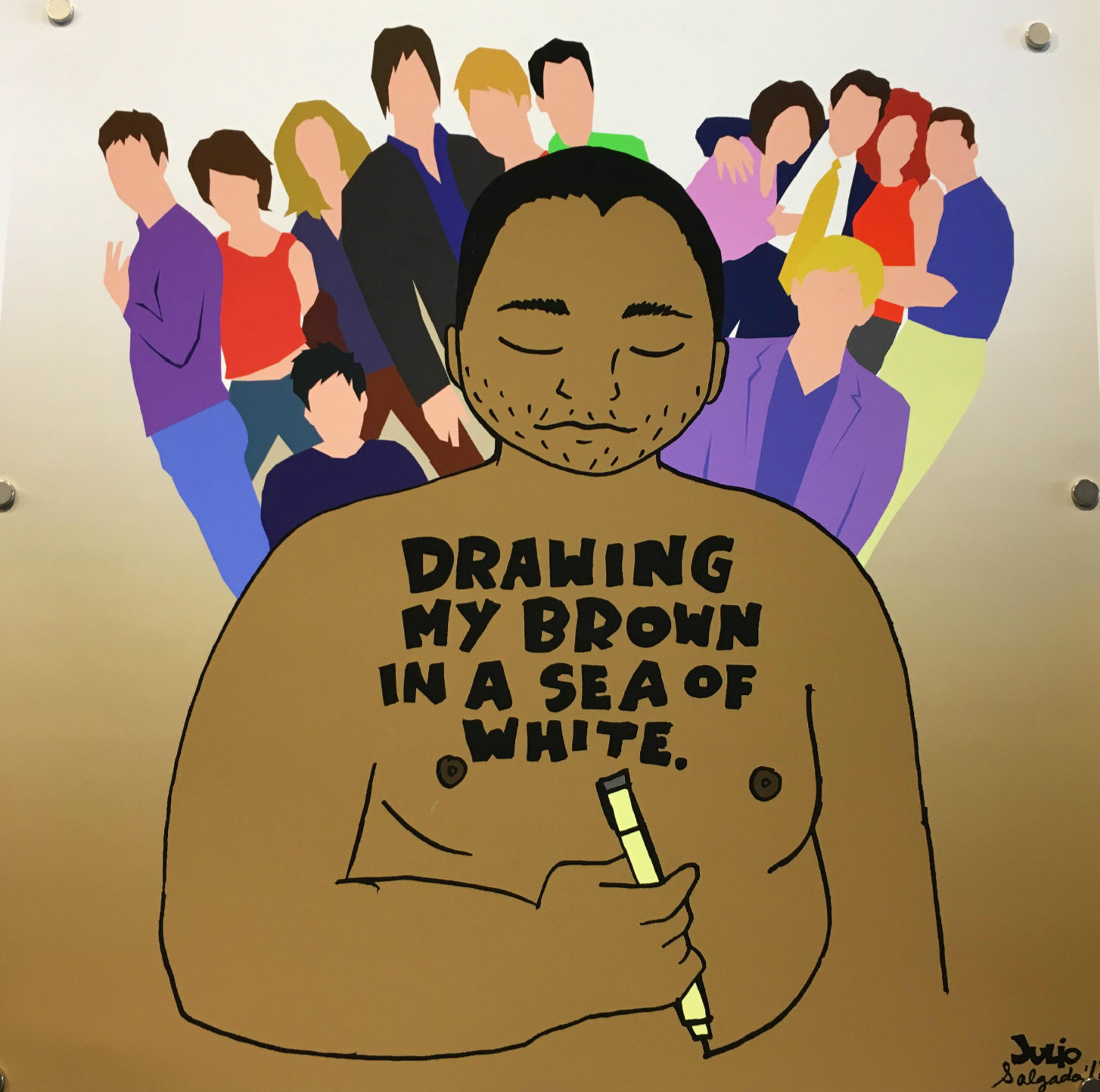It’s 1988: the year of the first National Coming Out Day, the year of the first World AIDS Day. ACT UP (AIDS Coalition to Unleash Power), a group of radical and mostly queer activists, take to the streets of New York to demand medical research and accessible treatment services for people living with HIV and AIDS. The term “transgender” becomes more common to describe gender non-conforming people. It’s a confusing and exciting time.
And in 1988 San Francisco, OUT/LOOK, a magazine bearing the subtitle “National Gay and Lesbian Quarterly” launches to chronicle the moment.

Thirty years later, San Francisco’s GLBT History Museum celebrates the publication’s groundbreaking work with OUT/LOOK & The Birth of the Queer, on view through Jan. 26. Included in the exhibition: a mural featuring cover art from issues of OUT/LOOK, a library with books written by the quarterly’s contributors, and several copies of the original publication. Reflecting on the magazine’s influence today, exhibition curator E.G. Crichton asked contemporary artists and writers to respond to articles and images published in OUT/LOOK. The result is an empowering and eclectic bridge between the past and present.
In Mister Loki’s contribution to the exhibition, inspired by Will Roscoe’s article “The Zuni Man-Woman” in OUT/LOOK’s second issue, the Los Angeles-based comic artist graphically explains the traditional role of lhamana in Zuni culture. The comic argues that gender non-conforming individuals have been celebrated members of various societies for generations.

Julio Salgado’s piece Drawing My Brown In A Sea of White responds to an interview with playwright and novelist Han Ong in OUT/LOOK issue 17. “It resonated with me how as artists of color we must keep telling our own narratives because nobody is going to do it for us,” Salgado says of the Q&A with Ong. His print in The Birth of the Queer is one in a series where Salgado explores his “immigration status, queerness and brown body.”

Artist Weyam imagines a transformed future where the hard work of today’s queer, social justice and environmental movements pays off with OUT/LOOK Cover 2048, an imagined issue 30 years down the line. Weyam’s 110th issue includes “How Queers Interrupted the Climate Crisis and Restored the Earth,” how Black Lives Matter transformed racial politics in the U.S., and a reflection on the end of toxic masculinity.

Perhaps the most moving piece in the exhibit is a video installation, The Presences of Absences by Andrew Spieldenner and Catron Booker. The four-minute video includes a sound recording tribute to the late Allan Bérubé’s “Caught in the Storm: AIDS and the Meaning of Natural Disaster,” from OUT/LOOK’s third issue. Bérubé’s essay, written just a year after his partner’s AIDS-related death, explores the fear, anger and guilt of living as a gay man during the AIDS epidemic of the 1980s.



